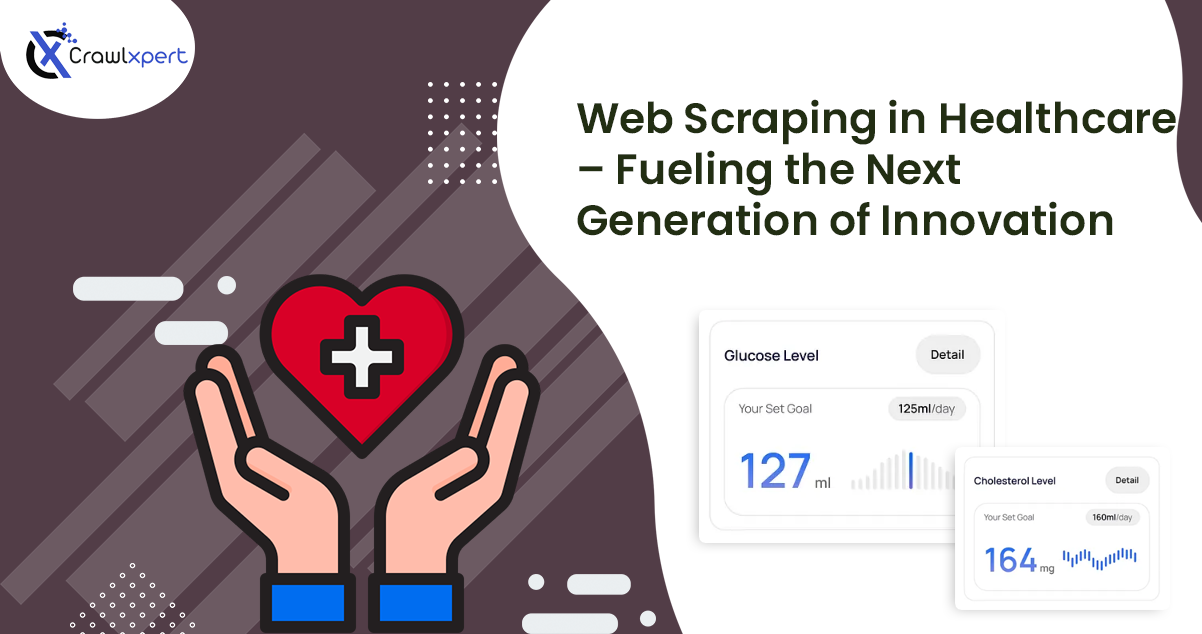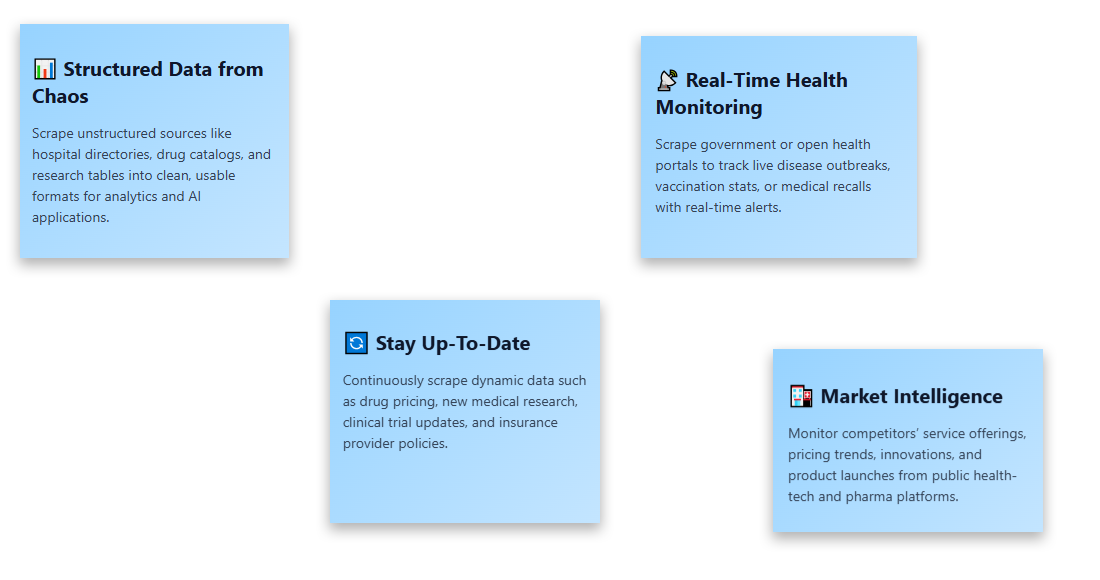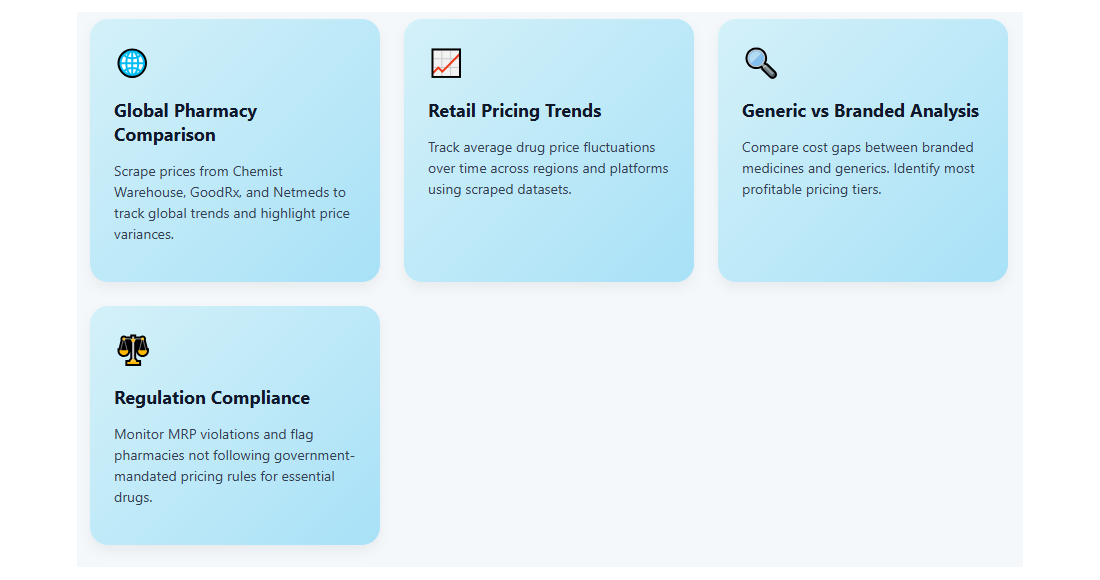
Web Scraping in Healthcare – Fueling the Next Generation of Innovation
Published on September 25, 2025
The healthcare industry is undergoing a transformative shift. With the rise of digital health technologies, AI-powered diagnostics, and patient-centric services, data has become the lifeblood of innovation. But while clinical trials and hospital databases are goldmines, there's a vast ocean of untapped insights scattered across public websites, research portals, insurance platforms, patient forums, and health marketplaces.
This is where web scraping in healthcare emerges as a powerful technique—systematically extracting unstructured data from websites to fuel clinical, operational, and business advancements.
In this blog, we’ll explore how healthcare organizations, researchers, and tech startups use web scraping to power the next generation of innovation, while addressing the ethical, legal, and technical considerations that come with it.
1. What Is Web Scraping in the Context of Healthcare?
Web scraping refers to the process of automatically extracting data from web pages using bots, scripts, or crawling software. In healthcare, web scraping can be used to collect:
- Medical research data from journals and clinical trial databases
- Drug price data from online pharmacies
- Patient feedback from review sites or forums
- Insurance coverage details from policy websites
- Hospital service information and doctor directories
- Public health updates from government portals
- Equipment and device pricing from vendor sites
The goal is to convert scattered information into structured, usable datasets that can inform decision-making and innovation.

2. Why Is Web Scraping Valuable in Healthcare?
Healthcare organizations face several challenges that web scraping can address:
- Lack of Structured Public Data: Many healthcare resources are unstructured (HTML tables, text blocks). Scraping helps normalize this for analysis.
- Constantly Changing Information: Drug prices, insurance policies, and doctor directories update frequently. Scraping ensures up-to-date intelligence.
- Real-Time Insights: Public health data or disease outbreak information can be scraped and monitored in near real-time.
- Market Intelligence: Healthcare companies can monitor competitors, benchmark prices, and track innovation trends.
3. Use Cases of Web Scraping in Healthcare
A. Clinical Research and Literature Analysis
Scrape metadata from sources like:
- PubMed
- ClinicalTrials.gov
- WHO Trial Registries
Use case:
- Track emerging therapies in oncology
- Discover recruitment criteria for trials
- Analyze research output by disease category
B. Drug Pricing Intelligence

Scrape prices from:
- Online pharmacies (1mg, Netmeds, MedPlusMart)
- Global ePharmacies (GoodRx, Chemist Warehouse)
Use case:
- Track retail price trends
- Compare generics vs branded drugs
- Monitor compliance with pricing regulations
C. Doctor & Hospital Directory Aggregation
Scrape from:
- Hospital websites
- Medical directories (Practo, WebMD, Healthgrades)
Use case:
- Build unified directories for provider search
- Verify credentials and specializations
- Assess geographical coverage for network expansion
D. Patient Sentiment Analysis
Scrape from:
- Patient forums (Reddit, HealthBoards)
- Google Reviews, Trustpilot
- Social media posts
Use case:
- Analyze sentiment around treatments, doctors, and hospitals
- Track adverse reactions and unmet needs
- Inform patient engagement strategies
E. Insurance and Health Policy Scraping
Scrape data from:
- Insurance websites
- Government subsidy programs (e.g., Ayushman Bharat)
Use case:
- Compare premiums, benefits, and exclusions
- Track regulatory changes
- Analyze market coverage gaps
F. Medical Equipment and Device Marketplaces
Scrape data from:
- Alibaba Health, Stryker, GE Healthcare distributors
- Equipment portals with catalogs
Use case:
- Benchmark pricing for procurement
- Analyze vendor diversity
- Track the availability of critical care tools
4. How Web Scraping Works in Healthcare
Tools & Tech Stack:
| Component | Tool Examples |
|---|---|
| Scraping | Python (BeautifulSoup, Scrapy, Selenium) |
| Browser Automation | Playwright, Puppeteer |
| Scheduling | CRON, Airflow |
| Storage | MongoDB, PostgreSQL, CSV |
| Visualization | Tableau, Power BI |
import requests
from bs4 import BeautifulSoup
url = "https://pubmed.ncbi.nlm.nih.gov/?term=cancer+immunotherapy"
headers = {'User-Agent': 'Mozilla/5.0'}
response = requests.get(url, headers=headers)
soup = BeautifulSoup(response.text, 'html.parser')
results = soup.find_all('article', class_='full-docsum')
for article in results:
title = article.find('a', class_='docsum-title').text.strip()
authors = article.find('span', class_='docsum-authors').text.strip()
print(f"Title: {title}\nAuthors: {authors}\n")5. Real-World Examples of Healthcare Web Scraping
| Organization Type | What They Scrape | Why |
|---|---|---|
| HealthTech Startups | Hospital directories, pharmacy prices | Build aggregator platforms |
| Pharma R&D Teams | Clinical trial registries, PubMed | Track research trends |
| Insurance Providers | Competitor plans and benefits | Create better coverage packages |
| Hospitals | Patient reviews, competitor offerings | Improve care quality, marketing |
| Market Research Firms | Public health dashboards, price trends | Deliver actionable insights |
6. Benefits of Web Scraping in Healthcare
- Accelerated Research: Cut down manual searching for studies, papers, and drug updates.
- Cost Optimization: Know the best market rates for drugs, equipment, and services.
- Better Targeting: Use sentiment and search data to fine-tune marketing and outreach.
- Operational Improvement: Improve provider networks, insurance listings, and patient touchpoints.
7. Challenges in Healthcare Web Scraping
| Challenge | How to Address |
|---|---|
| Anti-bot mechanisms | Use rotating IPs, delays, and headless browsers |
| Sensitive data (PHI/PII) | Scrape only public, non-identifiable data |
| Terms of Service & Legal Risk | Review TOS, stick to open/public sources |
| Frequent HTML changes | Build flexible scrapers with XPath/CSS backups |
| JavaScript-heavy sites | Use Selenium or Playwright for rendering |
8. Ethical & Legal Considerations
Healthcare data is sensitive. Web scraping must comply with laws like HIPAA, GDPR, and local privacy rules.
Follow These Guidelines:
- Scrape only publicly accessible, non-confidential data
- Avoid PII or personal medical records
- Never scrape content behind login or paywalls without permission
- Clearly label scraped data sources in internal reports
- Use scraped data for insights, not patient profiling
Many health agencies also provide open datasets (CDC, NIH, WHO) that can be scraped or integrated without risk.
9. Future of Web Scraping in Healthcare
- Feed AI and machine learning models with training data
- Enable predictive analytics for public health crises
- Power real-time procurement platforms for hospitals
- Improve price transparency for consumers
- Help regulatory bodies track compliance
Scraping will not replace traditional data sources—but will augment them, offering speed, breadth, and agility.
Conclusion
Web scraping is rapidly becoming a catalyst for innovation in healthcare. Whether it’s accelerating clinical research, improving transparency, optimizing operations, or empowering consumers, data from public websites holds untapped potential.
When done responsibly and ethically, web scraping equips healthcare innovators with the real-time intelligence they need to create better solutions, smarter systems, and healthier outcomes.

